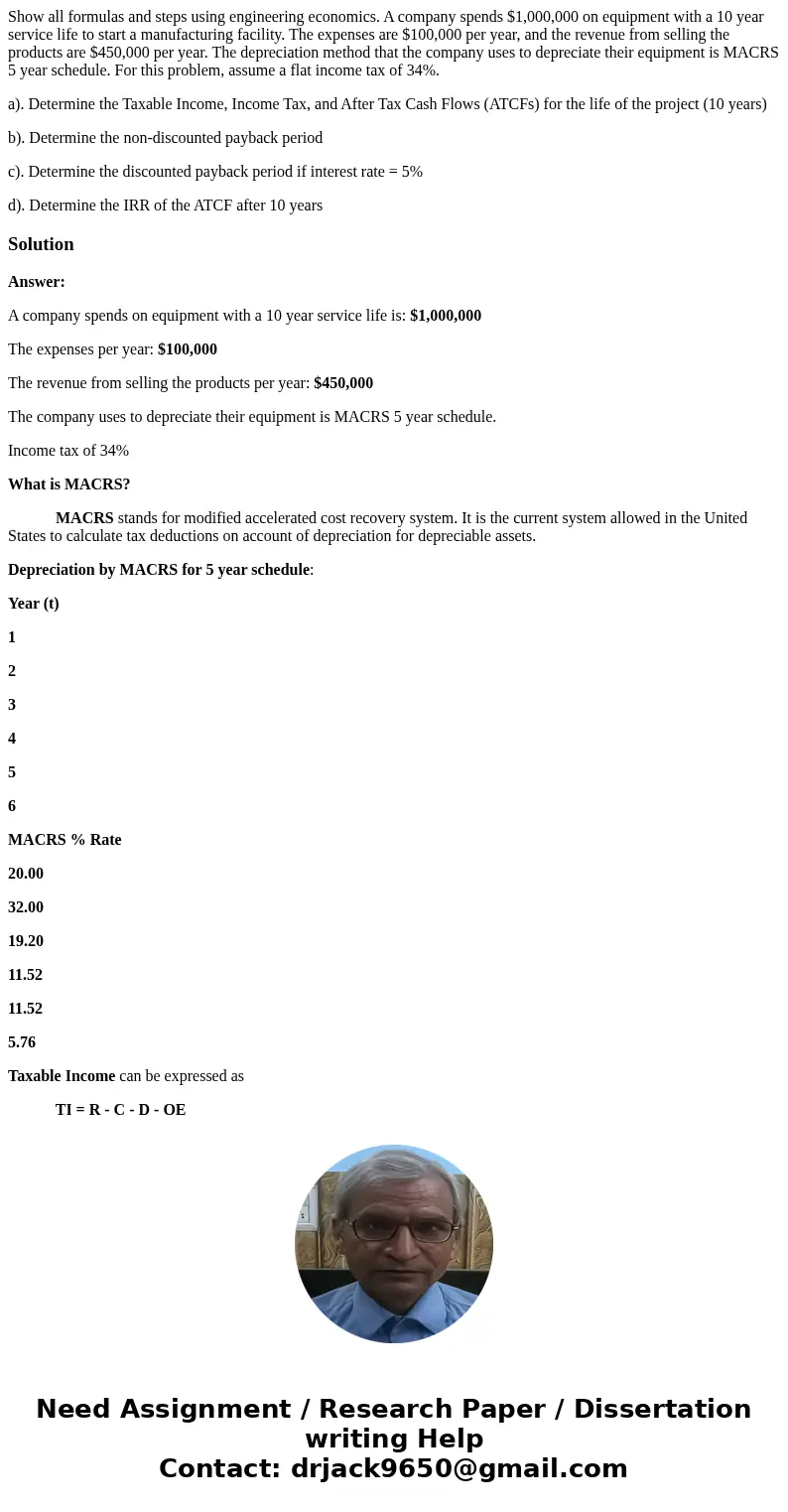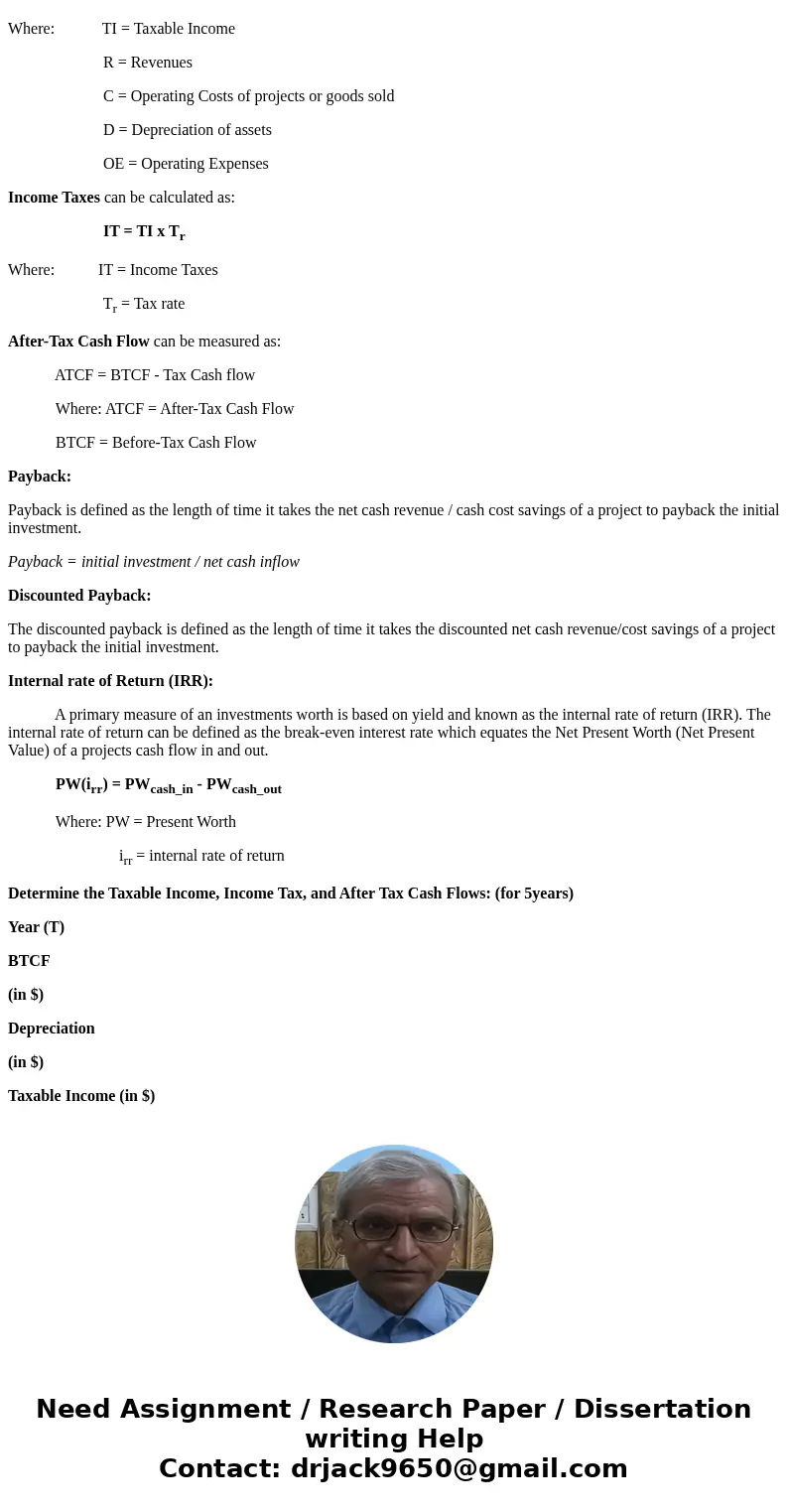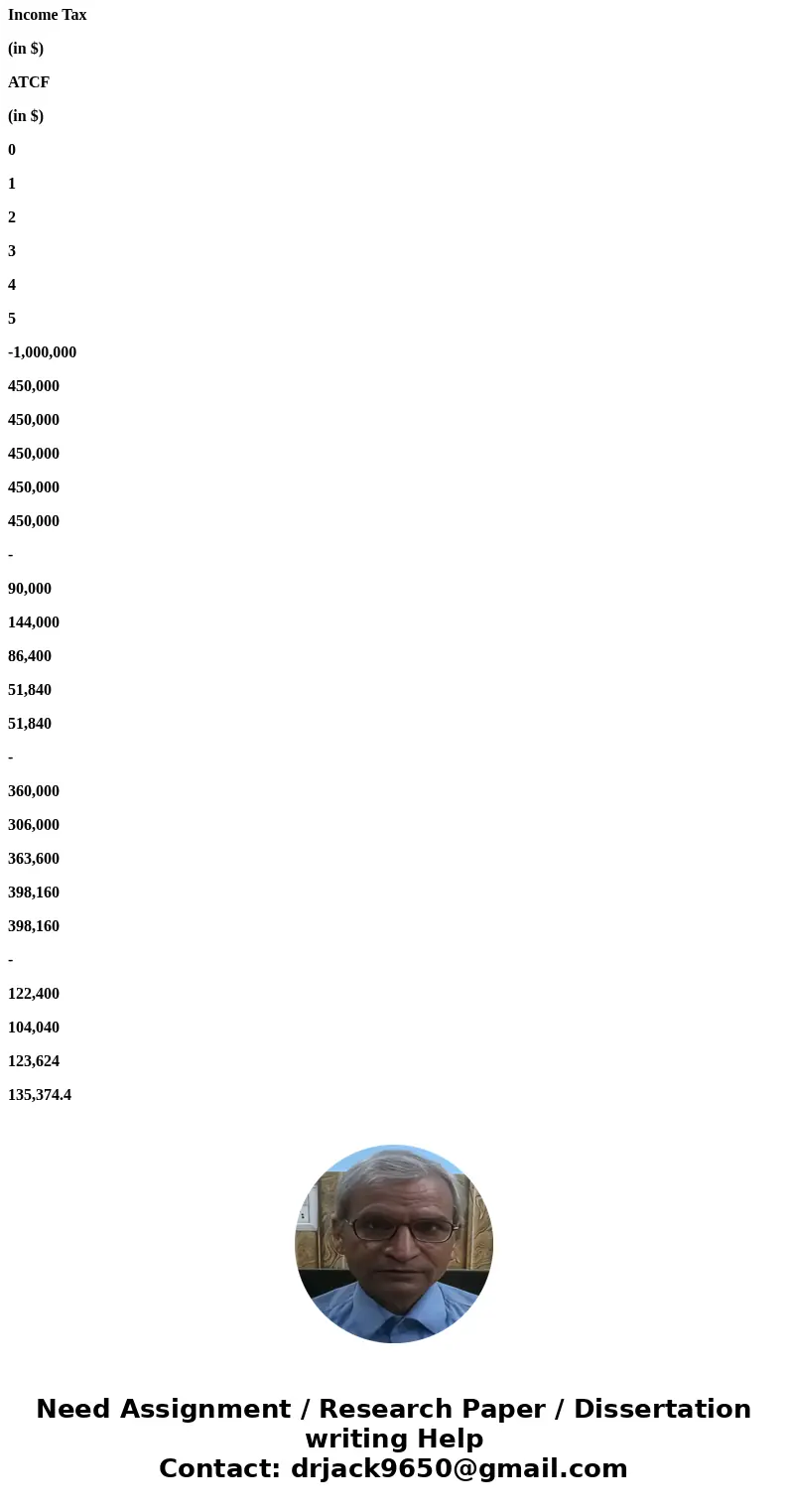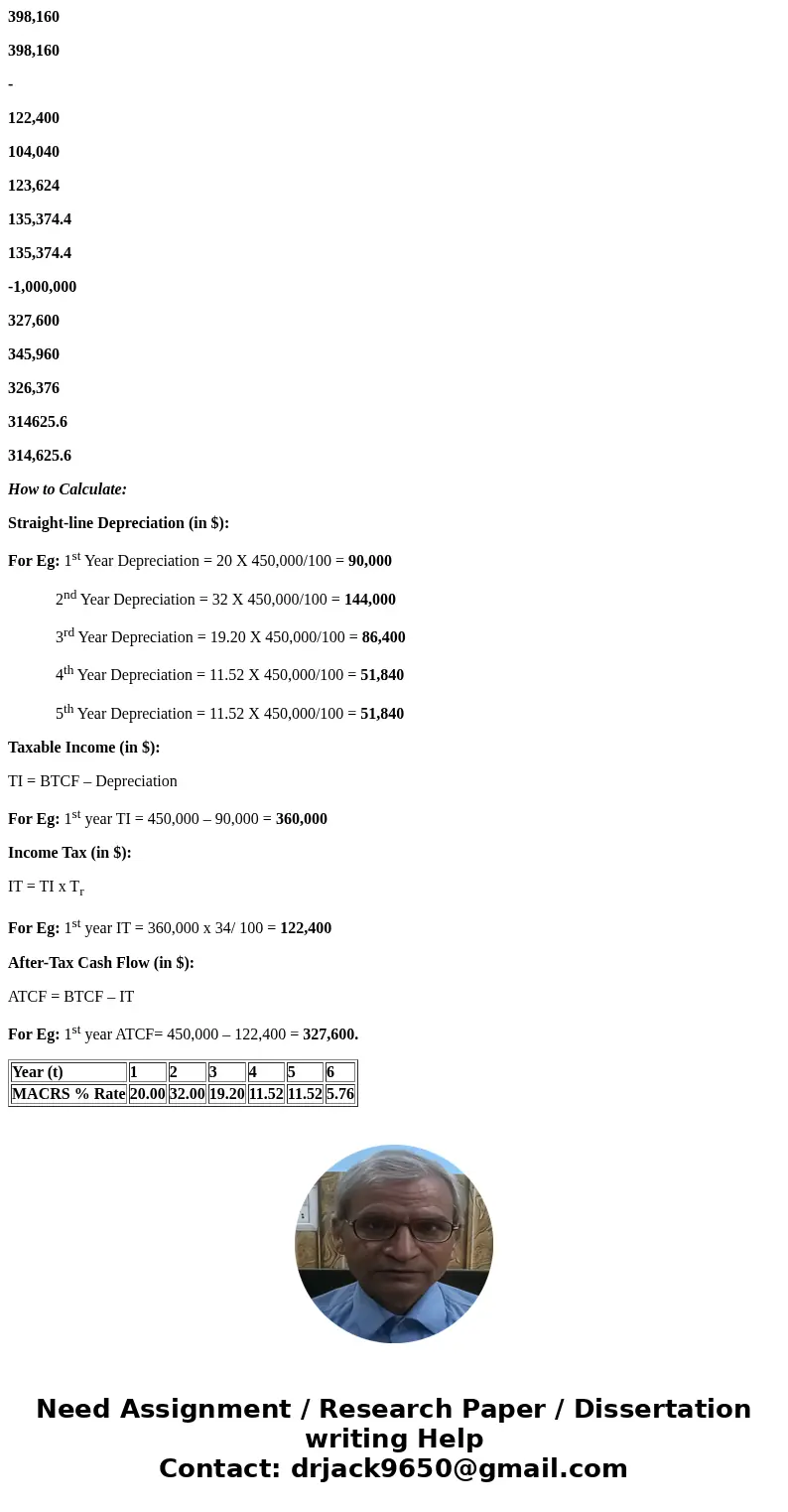Show all formulas and steps using engineering economics A co
Show all formulas and steps using engineering economics. A company spends $1,000,000 on equipment with a 10 year service life to start a manufacturing facility. The expenses are $100,000 per year, and the revenue from selling the products are $450,000 per year. The depreciation method that the company uses to depreciate their equipment is MACRS 5 year schedule. For this problem, assume a flat income tax of 34%.
a). Determine the Taxable Income, Income Tax, and After Tax Cash Flows (ATCFs) for the life of the project (10 years)
b). Determine the non-discounted payback period
c). Determine the discounted payback period if interest rate = 5%
d). Determine the IRR of the ATCF after 10 years
Solution
Answer:
A company spends on equipment with a 10 year service life is: $1,000,000
The expenses per year: $100,000
The revenue from selling the products per year: $450,000
The company uses to depreciate their equipment is MACRS 5 year schedule.
Income tax of 34%
What is MACRS?
MACRS stands for modified accelerated cost recovery system. It is the current system allowed in the United States to calculate tax deductions on account of depreciation for depreciable assets.
Depreciation by MACRS for 5 year schedule:
Year (t)
1
2
3
4
5
6
MACRS % Rate
20.00
32.00
19.20
11.52
11.52
5.76
Taxable Income can be expressed as
TI = R - C - D - OE
Where: TI = Taxable Income
R = Revenues
C = Operating Costs of projects or goods sold
D = Depreciation of assets
OE = Operating Expenses
Income Taxes can be calculated as:
IT = TI x Tr
Where: IT = Income Taxes
Tr = Tax rate
After-Tax Cash Flow can be measured as:
ATCF = BTCF - Tax Cash flow
Where: ATCF = After-Tax Cash Flow
BTCF = Before-Tax Cash Flow
Payback:
Payback is defined as the length of time it takes the net cash revenue / cash cost savings of a project to payback the initial investment.
Payback = initial investment / net cash inflow
Discounted Payback:
The discounted payback is defined as the length of time it takes the discounted net cash revenue/cost savings of a project to payback the initial investment.
Internal rate of Return (IRR):
A primary measure of an investments worth is based on yield and known as the internal rate of return (IRR). The internal rate of return can be defined as the break-even interest rate which equates the Net Present Worth (Net Present Value) of a projects cash flow in and out.
PW(irr) = PWcash_in - PWcash_out
Where: PW = Present Worth
irr = internal rate of return
Determine the Taxable Income, Income Tax, and After Tax Cash Flows: (for 5years)
Year (T)
BTCF
(in $)
Depreciation
(in $)
Taxable Income (in $)
Income Tax
(in $)
ATCF
(in $)
0
1
2
3
4
5
-1,000,000
450,000
450,000
450,000
450,000
450,000
-
90,000
144,000
86,400
51,840
51,840
-
360,000
306,000
363,600
398,160
398,160
-
122,400
104,040
123,624
135,374.4
135,374.4
-1,000,000
327,600
345,960
326,376
314625.6
314,625.6
How to Calculate:
Straight-line Depreciation (in $):
For Eg: 1st Year Depreciation = 20 X 450,000/100 = 90,000
2nd Year Depreciation = 32 X 450,000/100 = 144,000
3rd Year Depreciation = 19.20 X 450,000/100 = 86,400
4th Year Depreciation = 11.52 X 450,000/100 = 51,840
5th Year Depreciation = 11.52 X 450,000/100 = 51,840
Taxable Income (in $):
TI = BTCF – Depreciation
For Eg: 1st year TI = 450,000 – 90,000 = 360,000
Income Tax (in $):
IT = TI x Tr
For Eg: 1st year IT = 360,000 x 34/ 100 = 122,400
After-Tax Cash Flow (in $):
ATCF = BTCF – IT
For Eg: 1st year ATCF= 450,000 – 122,400 = 327,600.
| Year (t) | 1 | 2 | 3 | 4 | 5 | 6 |
| MACRS % Rate | 20.00 | 32.00 | 19.20 | 11.52 | 11.52 | 5.76 |




 Homework Sourse
Homework Sourse